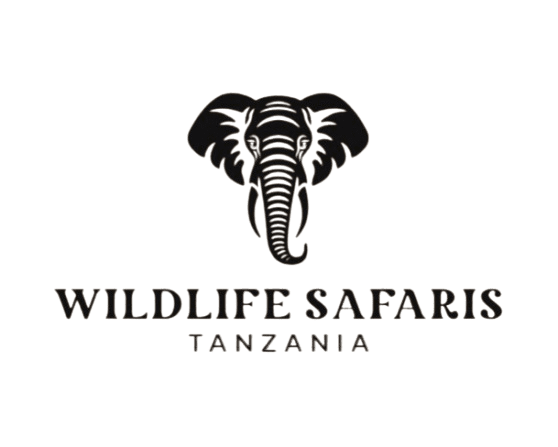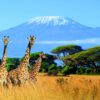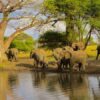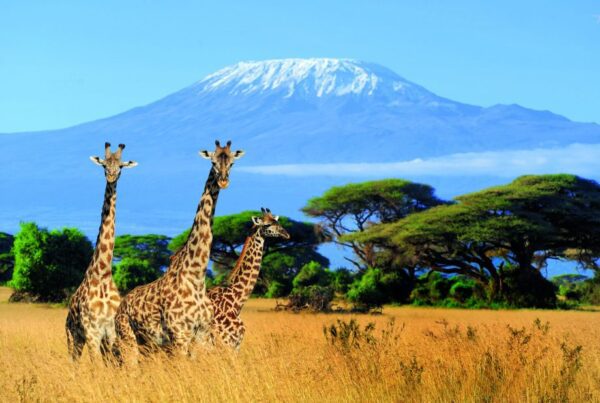Saadani National Park’s fauna
There are several parks in Tanzania. Although many safari tourists visit well-known parks like the Serengeti, Ngorongoro, Tarangire, and Lake Manyara, lesser-known locations like Saadani National Park provide excellent opportunities to witness wildlife at its best.
Saadani is the only park that borders the Indian Ocean and spans 410 square miles (1,062 square kilometers) along the coast. Thus, you have the sensation of spending the day on a woodland beach while seeing animals. Saadani was a wildlife reserve before it was designated as a park in 2005.
The benefits of visiting this undiscovered gem are spectacular, with vistas of animals and aquatic life being the main attractions. Although you won’t see all five of the Big Five, you have a good possibility of seeing buffalo and elephants, and you may even see lions once in a while. Animals from Saadani National Park are highlighted in this article.
The Five Major
You won’t find all five species at Saadani, which isn’t surprising, but it’s funny to run upon an elephant when strolling down the beach. Elephants are more common in the Saadani, but there are other creatures like buffalo, lions, and leopards as well, bringing the total number of the Big 5 to four. Their enormous bulk, tusks, and gray coat are crucial in making passageways for other animals. Consequently, herbivores may move about more easily.
• In this park, lions are deadly predators. They mostly hunt antelopes and zebras, although they can work together to kill buffalo and wildebeest. • Leopards are quite uncommon in Saadani. Although it may be difficult to notice one because of their elusiveness, it is feasible. They would spend the day on acacia trees since they are arboreal. Buffalo are abundant in grasslands and floodplains, and their hunting strategies are remarkable. One such strategy is tracking the target and then attacking suddenly to bring it down. They tend to remain in sizable herds of up to 300 animals. The herd is ruled by a few powerful bulls. Additionally, because lone bulls can be unpredictable, use caution around them for your own protection.
Primates
Primates, baboons, and monkeys all thrive in Saadani’s deep jungle. While some live in the coastal woodlands, others like the park’s terrestrial area. Here, black-and-white colobus monkeys, vervet monkeys, and yellow baboons are prevalent.
1. Colobus monkeys with black and white coloring
This uncommon and unusual kind of monkey lives in Saadani. Their remarkable white fur and black coat set them apart from other Old World monkeys, like the red colobus. They mostly eat immature fruits, leaves, and flowers. They are found in the Saadani coastal woodland.
2. Baboons that are yellow
Saadani’s terrestrial woodlands are home to yellow baboons. They are known to be very gregarious and more intellectual. There are typical groups of up to 100 people. They are striking due to their gorgeous yellowish-brown hair and large, canine-like muzzle.
They may eat leaves, insects, and small animals, but they mostly eat fruits. To show their level of intellect, they occasionally shatter nuts with pebbles.
3. Monkeys with velvet coats
In Saadani, small, thin vervet monkeys are easily identified by their brilliant blue bottoms, black faces, and grey-olive coats. They hang out in Saadani’s wooded and seaside regions in small groups of up to ten people.
Along with using tools like stones, they consume a variety of foods, including insects, bird eggs, tiny lizards, fruits, flowers, new shoots, and leaves. They are quite common and frequently observed feeding in trees or on the ground.
Giraffes
Seeing an elegant giraffe at Saadani National Park is very common. This tall animal is frequently observed eating acacia trees. One interesting aspect about these creatures is that, like human fingerprints, each one has a unique coat pattern. They also represent Tanzania.
Antelopes
Many types of antelopes may be seen in Saadani. The majority of them favor woods, floodplains, and grassy plains. Among the most prevalent are bigger kudus, red duikers, waterbucks, reedbucks, and bushbucks.
Typically, antelopes remain in sociable herds of up to fifty. Their primary food sources are plants and grass. They also go to water sources more often to drink water. They may be found around waterholes, the Wami River, and other water sources.
Other creatures
There are mongooses in addition to big predators like lions and leopards. Mongooses are tiny, elusive animals that hunt insects and rodents. They have the courage to battle even the most poisonous snakes.
Genets have tiny, lean bodies and are nocturnal creatures. Genets often emerge in the late evening and early morning hours and are not accessible throughout the day. They can hunt at night thanks to their keen vision. As carnivores, they often eat insects, birds, reptiles, and small mammals.
Warthogs are large, pig-like beasts that are fascinating and humorous. Their ability to flee from predators is the most amusing aspect. You should definitely locate one if you haven’t already. They may be identified by their large snout, one set of tusks protruding from the upper jaw, and their greyish-brown coat.
Nile crocodiles, hippos, and sitatungas
Crocodiles and hippos can be found in the Wami River. In the late morning and afternoon, Nile crocs and hippos typically lounge on the riverbanks. Large animals are hippopotamuses. Keep a close eye on them since they might be violent.
As predators, crocodiles are deadly. While they wait for the chance, they remain underwater. When they emerge, they strike swiftly, drowning their victim before killing it.
An uncommon antelope that lives in swamps is the sitatunga. Mangroves are the preferred habitat for this kind species.
Birds
Saadani has more than 300 bird species for avian enthusiasts to see. There are flamingos, storks, herons, egrets, bee-eaters, sunbirds, fish eagles, kingfishers, and more. To ensure a great encounter, bring binoculars.
Marine organisms
You may anticipate seeing marine life while you’re there since Saadani is a park where the bush meets the ocean. Green turtles use it as a nesting ground. Dolphins can also be seen, however, this is not a given. Moreover, fish, crabs, and other marine life are frequently found in mangrove habitats.
We recommend Saadani National Park if you enjoy combining sea adventures with wildlife watching. Please get in touch with our staff if you have any more questions.








